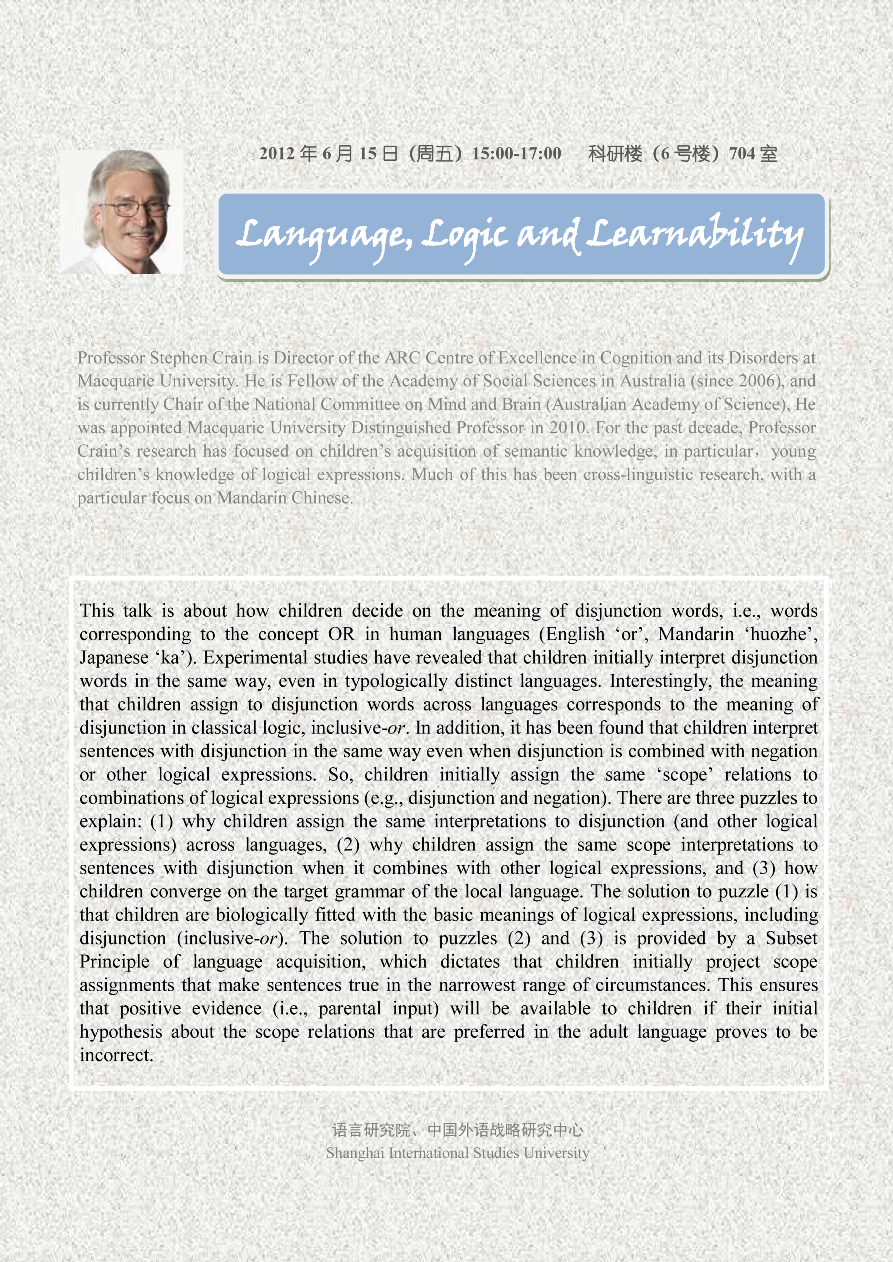讲座题目:Language, Logic and Learnability
主讲者:Stephen Crain教授
时间:
地点:上海外国语大学虹口校区科研楼(6号楼)704会议室
讲座语言:英语
主办单位:上海外国语大学语言研究院/中国外语战略研究中心

Stephen Crain教授简介:
Professor Stephen Crain is Director of the ARC Centre of Excellence in Cognition and its Disorders at
讲座内容提要:
This talk is about how children decide on the meaning of disjunction words, i.e., words corresponding to the concept OR in human languages (English ‘or’, Mandarin ‘huozhe’, Japanese ‘ka’). Experimental studies have revealed that children initially interpret disjunction words in the same way, even in typologically distinct languages. Interestingly, the meaning that children assign to disjunction words across languages corresponds to the meaning of disjunction in classical logic, inclusive-or. In addition, it has been found that children interpret sentences with disjunction in the same way even when disjunction is combined with negation or other logical expressions. So, children initially assign the same ‘scope’ relations to combinations of logical expressions (e.g., disjunction and negation). There are three puzzles to explain: (1) why children assign the same interpretations to disjunction (and other logical expressions) across languages, (2) why children assign the same scope interpretations to sentences with disjunction when it combines with other logical expressions, and (3) how children converge on the target grammar of the local language. The solution to puzzle (1) is that children are biologically fitted with the basic meanings of logical expressions, including disjunction (inclusive-or). The solution to puzzles (2) and (3) is provided by a Subset Principle of language acquisition, which dictates that children initially project scope assignments that make sentences true in the narrowest range of circumstances. This ensures that positive evidence (i.e., parental input) will be available to children if their initial hypothesis about the scope relations that are preferred in the adult language proves to be incorrect.







